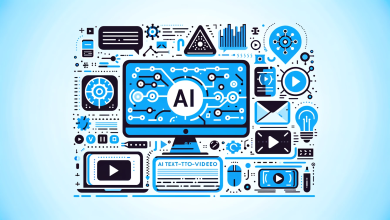
Much of the global conversation around Artificial Intelligence focuses on the displacement of workers, yet the more urgent and less acknowledged reality is that AI is not replacing individuals; it is rendering obsolete the organizations that failed to prepare them. In the new landscape of AI-driven transformation, success will not hinge on who possesses the most powerful algorithms or the latest platforms, but on who nurtures the most adaptive, capable, and strategically minded workforce to wield them with judgment, creativity, and purpose.
Despite surging investment in AI technologies, many enterprises continue to bypass the more demanding and ultimately decisive challenge: preparing their people to evolve alongside these systems. True transformation cannot be achieved through automation alone; it must be led through deliberate shifts in culture, role design, and leadership behaviour. AI’s impact on the world of work will be shaped by how effectively organizations reimagine collaboration between humans and AI, and train workforces in AI fluency at every level.
The End of Jobs-as-usual
While workforce anxiety surrounding AI is both widespread and understandable, the most profound shifts underway are more nuanced than alarmist headlines may suggest. AI does not simply erase entire professions in a single stroke; instead, it deconstructs jobs into their component tasks. Some of these tasks are well suited to automation, others are elevated through intelligent augmentation, and many remain fundamentally human, demanding context, judgment, and emotional intelligence that machines cannot replicate.
According to McKinsey (July 2023 Report), while 30% of hours worked in the U.S. could be automated by 2030, only 5% of occupations are expected to disappear entirely. Roles in office support, customer service, and food services are particularly vulnerable, with projected job losses including 1.6 million clerks, 830,000 retail salespeople, 710,000 administrative assistants, and 630,000 cashiers. These are positions dominated by monotonous tasks, data entry, and basic processing, which can all be taken over by AI.
Even in sectors poised for growth, such as manufacturing, the nature of work is undergoing a fundamental shift. While traditional production roles continue to decline, there is a sharp rise in demand for technically proficient, digitally fluent talent. It is up to society to train people to be prepared to take on such roles.
The prevailing narrative, therefore, is not one of widespread job elimination but of large-scale job recomposition. Organizations don’t require mass layoffs, but new operating models, and that reinvention begins with strategic reskilling, one which must be championed and modelled by leadership at every level.
Training Once is Training Too Late
Many leaders still regard reskilling as a procedural formality, delivered through a workshop, a bootcamp, or a brief upskilling sprint. However, integrating AI into everyday workflows is not a one-time adjustment; it is a continuous transformation that requires a dynamic learning model woven into the very structure of work.
The World Economic Forum’s Future of Jobs Report 2023 projected that employers estimate that 44% of workers’ core skills will change by 2028. Yet most organizations still reskill reactively, after a platform upgrade, a reorg, or a downturn. To truly prepare for AI integration, companies need proactive, future-aligned reskilling, grounded in business strategy and AI deployment roadmaps.
This does not mean transforming every employee into a data scientist or prompt engineer. Instead, it requires empowering your workforce to excel in areas beyond machine capabilities, such as exercising sound judgment, managing complexity, applying specialized domain knowledge, and using AI-generated insights to drive better decisions. These are the essential power skills of the AI era and call for a reskilling strategy that advances as rapidly as the technology itself.
Fluency, Not Fear: Upskilling Teams with AI
A decade ago, digital literacy became vital across industry. Today, AI fluency must be treated the same way: not just for engineers and data teams, but even for HR, finance, marketing, operations, and leadership. While nearly all organizations are investing in AI, only 1% consider themselves mature in its adoption.
According to McKinsey’s January 2025 report, the primary obstacle to scaling AI isn’t employee readiness; it’s leadership’s pace in guiding transformation. This clarifies why AI fluency extends beyond basic understanding. Leaders must grasp AI’s capabilities and limitations, critically assess its outputs, and anticipate where automation risks may arise.
Resistance to AI isn’t about technology, but it’s about fear, which is exacerbated when employees feel left out of shaping the future of their work. Opaque, top-down AI rollouts that ignore workers’ experiences breed alienation, not transformation. Inaccurate outputs, algorithmic bias, and lack of accountability damage trust and undermine adoption. Thus, leaders must prioritize transparency, governance, and honest communication, making trust a critical measure of AI success.
Employees who possess advanced AI fluency not only enhance their individual performance but also significantly elevate outcomes in complex and strategic contexts. This fluency is therefore essential not only for frontline teams but equally critical for leadership, serving as a key competitive differentiator in today’s landscape. Organizations that lack this capability risk both underleveraging AI’s transformative potential and misapplying it in ways that undermine trust and compromise results.
Beyond Tools: Rethinking What Work Means
As AI becomes embedded in everyday workflows, simply tacking “familiarity with AI tools” onto job descriptions is a superficial response to a profound transformation. True AI integration requires leaders to fundamentally rethink work itself by breaking down roles into discrete tasks, like distinguishing what AI will automate, what it will augment, and what new tasks will emerge. Further, these insights can be used to reshape job design, team structures, and performance metrics.
In customer service, if AI manages 80% of routine inquiries, human agents must shift toward complex problem-solving, empathy, and relationship-building. Yet if success continues to be measured by outdated metrics like “calls per hour,” organizations risk devaluing the very skills that AI can’t replicate. Leadership must go beyond adding tools, reinventing roles to unlock the full potential of a hybrid human-AI workforce.
The Unsung Heroes of AI Transformation: Middle Managers
The C-suite may fund the AI vision, but it’s middle managers who translate that vision into frontline practice. If they aren’t aligned, enabled, and fluent in AI’s implications, the transformation stalls. With the emergence of AI, managers are facing dual pressure: to hit targets using unfamiliar tools, and to support teams who are confused, anxious, or sceptical. If they aren’t trained in how to lead through AI-driven change ethically, empathetically, and operationally, they can become blockers to operational progress, instead of enablers.
Organizational Commitment, Not Quick Wins
Too many organizations approach AI as a mere tool to be deployed rather than a strategic capability to be cultivated over time. This limited perspective creates operational silos, reliance on vendor-driven solutions, and superficial gains that fail to deliver lasting impact. The true value of AI emerges through seamless integration, which demands organizational maturity.
Companies which will lead AI adoption, and therefore their industries, will strategically align AI initiatives with core business objectives, as well as embed them within cross-functional teams, and establish adaptive governance frameworks that evolve alongside the technology. They will also institutionalize continuous learning, recognizing that today’s AI fluency will become tomorrow’s competitive advantage, while ethical oversights today risk becoming significant brand liabilities in the future. Achieving AI maturity requires not only the utilisation of the most advanced models, but also the organizational sophistication to harness their full potential.
Invest in People or Prepare to Be Disrupted
We have long surpassed the era when AI was merely a speculative concern; it is now an active and transformative force reshaping the very foundations of productivity, decision-making, and innovation. Yet, technological prowess alone will not dictate which organizations prosper; human capital will be the true differentiator.
The victors in the AI-driven landscape will not be those boasting the largest datasets, the swiftest rollouts, or the most dazzling demonstrations. Rather, success will favour those who have made the earliest and most substantial investments in cultivating the skills and capabilities of their workforce. AI is not displacing workers; it is rendering obsolete the organizations that fail to prepare themselves.





